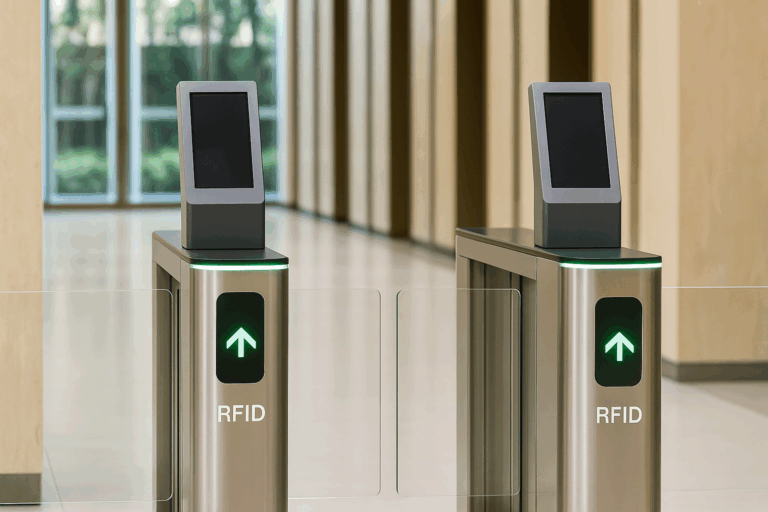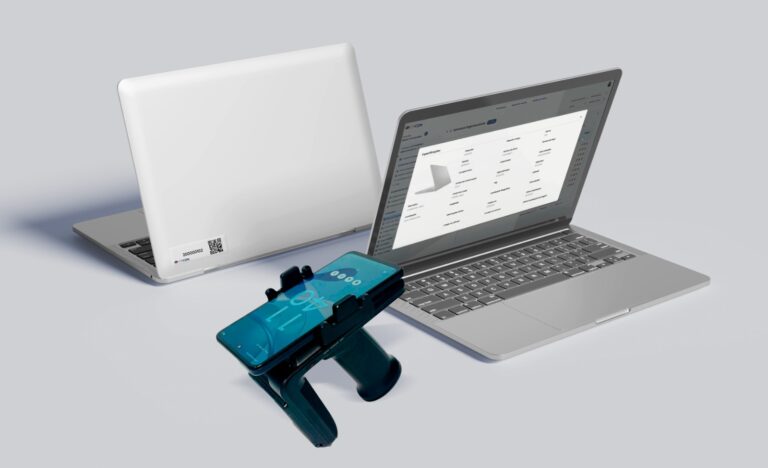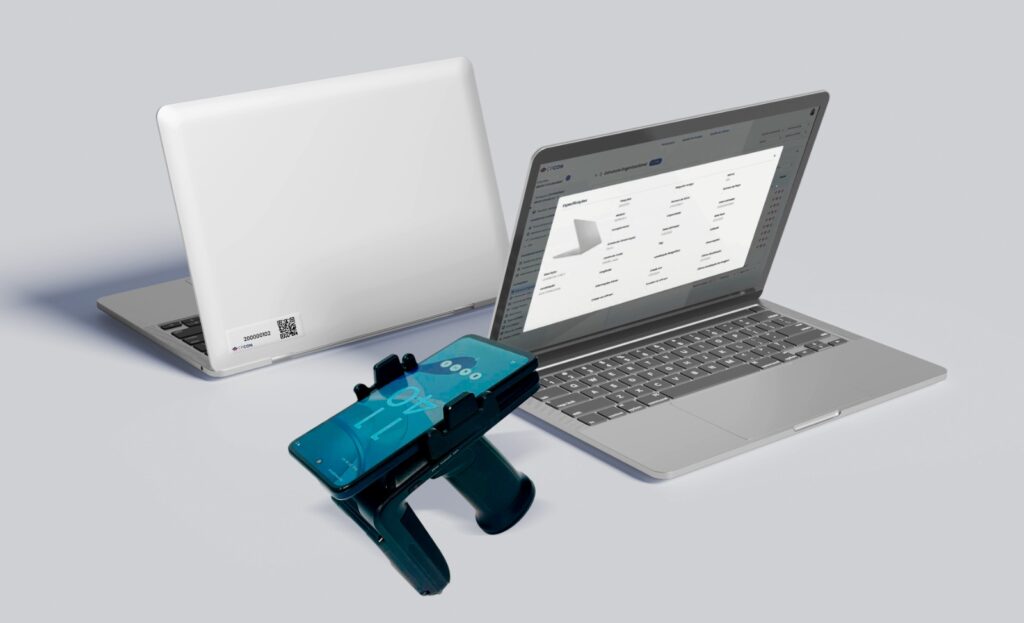A fixed asset policy is more than a compliance tool — it’s the backbone of secure, scalable, and intelligent asset management.
In a world where companies manage thousands of assets across departments, plants, and countries, the lack of a well-defined policy can lead to financial distortion, audit failures, and operational chaos. Fixed assets might be duplicated, outdated, or lost in spreadsheets. Worse: leaders make decisions based on inaccurate data.
That’s where a structured policy makes the difference.
A fixed asset policy defines clear rules for acquisition, classification, depreciation, tagging, and disposal of assets. It ensures compliance with IFRS, GAAP, and other international standards, while bringing control and transparency to every stage of the asset lifecycle. More than a document, it’s a strategic foundation that connects internal processes to long-term value creation.
In this guide, you’ll discover the key components of an effective fixed asset policy, the most common mistakes companies make, and how CPCON helps organizations around the world take full control — combining best practices, RFID technology, ERP integration, and internal engagement.
Let’s explore how to turn your fixed asset policy into a competitive advantage.

Table of Contents
ToggleWhat Is a Fixed Asset Policy and Why Does It Matters?
A fixed asset policy is not just a financial guideline — it’s a strategic foundation for operational control. Companies with thousands of assets in multiple locations face daily challenges: undocumented losses, depreciation inconsistencies, and inefficient audits. Without a clear policy, these issues multiply.
A fixed asset policy defines how your organization acquires, classifies, tracks, depreciates, and disposes of assets. It brings structure to chaos and helps maintain compliance with regulatory standards such as IFRS, GAAP, and local audit laws. Most importantly, it empowers leaders to make informed decisions based on reliable data.
Key Components of a Strong Fixed Asset Policy
A good policy is more than just a list of rules. It is a practical, actionable document built around these essential pillars:
- Capitalization threshold: Defines the minimum value for recognizing an item as a fixed asset.
- Asset classification: Distinguishes between categories like machinery, vehicles, IT equipment, and buildings.
- Depreciation methods: Establishes how and over what period the asset will lose value (straight-line, units of production, etc.).
- Asset tagging and tracking: Specifies identification processes, often enhanced with RFID technology.
- Disposal and retirement: Outlines how to decommission or sell assets.
- Internal controls: Defines responsibilities, authorizations, and review procedures.
Each of these elements ensures accuracy, transparency, and long-term reliability in asset reporting.
Common Mistakes to Avoid
Many companies have fixed asset policies that look good on paper — but fail in practice. Here are the most frequent pitfalls:
- Undefined capitalization thresholds: Leads to excessive operational clutter.
- Poor documentation: Causes discrepancies during audits or physical inventories.
- Outdated asset lists: Reduces visibility and increases risks of ghost or idle assets.
- No integration with technology: Manual tracking systems lead to data errors and inefficiencies.
- Lack of policy enforcement: Rules aren’t followed because no one is held accountable.
Avoiding these mistakes isn’t just about compliance — it’s about saving money, time, and credibility.
Benefits of Implementing a Robust Fixed Asset Policy
When well executed, a fixed asset policy delivers tangible business value:
- Audit readiness: All assets are traceable, documented, and compliant.
- Operational efficiency: Resources are used correctly and waste is minimized.
- Cost transparency: Asset lifecycles and values are visible in real time.
- Loss prevention: RFID and standardized controls reduce theft and misplacement.
- Strategic insights: Data from asset management feeds into better CAPEX planning.
Fixed Asset Policy and Regulatory Compliance
A strong policy aligns with accounting and audit standards, especially:
● IFRS (International Financial Reporting Standards)
- Key standard: IAS 16 – Property, Plant and Equipment
- Relevance: Clarifies asset recognition, depreciation, and derecognition.
- Relevance: Clarifies asset recognition, depreciation, and derecognition.
● GAAP (Generally Accepted Accounting Principles)
- Used in U.S.-based entities, with a strong focus on consistency and auditability.
A clear asset policy demonstrates internal maturity and reduces risk exposure — a decisive advantage during external audits or financial due diligence.
The Role of Organizational Culture in Fixed Asset Policy Success
Even the most well-crafted fixed asset policy will fall short if not supported by a strong organizational culture. CPCON understands that success lies not only in documentation and systems, but in people.
Here’s how we support cultural alignment during policy implementation:
- Training and awareness: Everyone — from senior leadership to operational teams — must understand the policy, its purpose, and their role. CPCON works closely with internal teams to promote this alignment.
- Clear communication: The policy should be transparent, accessible, and easy to understand, with open channels for questions and feedback.
- Leadership engagement: Leaders should lead by example, consistently applying and championing the policy across departments.
- Continuous improvement: The policy must evolve based on real-world feedback. CPCON supports ongoing updates, ensuring the policy remains relevant and effective over time.
Without a culture that values asset management, even the best technology can fall short. That’s why CPCON integrates education and internal engagement into every solution we deliver.

ERP Integration and Real-Time Data: Turning Policy Into Strategy
Beyond design and documentation, a fixed asset policy gains real impact when fully integrated into enterprise systems. At CPCON, we help organizations connect their asset policy with ERP platforms and Business Intelligence (BI) tools, creating a living system of control.
Here’s what full integration enables:
- Process automation: Minimize manual data entry and errors. Our RFID solutions are a core enabler of this automation.
- A holistic view: Connect asset data with financial and operational indicators for smarter, cross-functional decisions.
- Real-time reporting: Generate dashboards and custom reports that support strategic planning and audit preparation.
- Forecasting capabilities: Use historical and real-time data to predict maintenance, replacements, and future CAPEX needs.
How CPCON Helps You Gain Total Control
At CPCON, we don’t just help you create a policy. We deliver total visibility. Our global team of asset management experts works side-by-side with companies to:
- Implement best practices aligned with IFRS, GAAP, and audit standards;
- Deploy smart tracking technologies, such as RFID portals, for real-time visibility;
- Digitize your policy and connect it to your ERP, ensuring it evolves with your business;
- Perform full physical inventories and reconciliations, wherever your assets are located.
We bring more than recommendations — we deliver operational control.
Need help defining or improving your fixed asset policy?
👉 Contact our team for a free consultation
Total Control Starts with the Right Policy
A fixed asset policy is more than a document — it’s the backbone of scalable, secure asset control. With clear rules, reliable data, and advanced technology, your company operates with confidence, compliance, and total efficiency.
FAQ
What is the purpose of a fixed asset policy?
To ensure all capital assets are acquired, tracked, depreciated, and disposed of consistently — in compliance with accounting standards.
How do I determine the right capitalization threshold?
It depends on your business size, asset profile, and regulatory context. Common thresholds range from $500 to $5,000 per item.
How often should the policy be reviewed?
Best practice suggests reviewing annually, or when there’s a significant business or regulatory change.
Can RFID improve fixed asset control?
Yes. RFID enables automated, real-time tracking and reconciliation, reducing manual errors and improving audit accuracy.
What happens if I don’t have a fixed asset policy?
You risk misstatements, audit failures, financial penalties, and inefficiencies in asset usage and replacement planning.
Get to Know CPCON Group: A global expert in asset management and inventory solutions
CPCON Group is a global leader in asset management, fixed asset control, and RFID technology. With over 25 years of experience, we have supported major companies such as Nestlé, Pfizer, Scania, BASF, Coca-Cola Andina, Vale, Vivo, Petrobras, and Caixa in high-complexity projects.
Curious about our global footprint? We are present in:
- North America: Toronto, New York, Miami, Minneapolis, Seattle, Dallas
- Latin America: São Paulo, Buenos Aires, Lima, Bogotá, Mexico City
- Europe: Lisbon, Porto, London, Birmingham, Milan, Rome, Turin, Madrid, Bilbao
- Middle East: Dubai, Saudi Arabi
- Caribbean: Tortola, Grand Cayman
Follow our LinkedIn Showcase Page and stay updated with strategic content on asset control, inventory management, and RFID innovation across industries.
A fixed asset policy is a critical framework for tracking, depreciating, and controlling assets efficiently and in compliance with international standards like IFRS and GAAP. This article outlines best practices such as defining capitalization thresholds, establishing depreciation methods, implementing RFID for asset tracking, and aligning policies with audit requirements. It also highlights common mistakes, regulatory considerations, and how CPCON helps companies gain total control over their fixed assets with scalable, technology-driven solutions.























